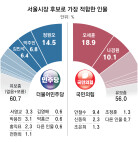Government Announces Emergency Arbitration of Asiana Airlines Strike
Government Announces Emergency Arbitration of Asiana Airlines Strike
Posted August. 11, 2005 03:05,
The government exercised its emergency arbitration right on the Asiana Airlines pilots union strike at 6:00 p.m. on August 10.
Earlier, starting at 6:00 a.m. on the same day, management and labor of the carrier carried out last-minute negotiations in Chojeongspatel located in Cheongwon-gun, North Chungcheong Province, but failed to hammer out the differences in their views.
Since the unionized pilots have remained steadfast in their demands, such as the extension of the retirement age and the curtailment of flight hours, both of which put a burden on the carrier, their negotiations have reached an impasse.
Putting announcing the emergency arbitration on the backburner, the government dispatched Vice Minister of Labor Jeong Byeong-seok and Vice Minister of Construction and Transportation Kim Yong-deok to the venue for negotiations in a bid to encourage reaching an agreement.
On top of that, the government deployed about 1,800 policemen from 15 companies around Shin Jung Youth Town in Boeun-gun, North Chungcheong Province, where about 400 unionized pilots stayed, in preparation for announcing emergency arbitration due to the rupture in the negotiations.
Meanwhile, as the walkout goes into its 25th day, Asiana Airlines has seen that a total of 2,432 international, domestic and cargo flights grounded.
Asiana Airlines estimated that the losses suffered by the carrier amounted to 240 billion won, including 138.6 billion won in flights and 101.4 billion won in cargo, and if the damage of 184.1 billion won in related industries, including cargo transportation companies and tourism companies, is combined, the total losses would amount to 424.1 billion won.
The number of passengers, who have suffered damages such as changing their itineraries or seeking alternative flights from industrial action, is 540,000. In addition, the amount of cargo the carrier failed to carry stood at 44,000 tons.
In particular, exporters who have exported to the southeast areas where the carrier has a high occupancy rate, and to Europe and America, where it is difficult to expand the number of flights, have suffered much inconvenience.
Keuk-In Bae bae2150@donga.com




![“작년에 얼린 떡으로 떡국 No!”…냉동 떡 2달 지나면 버려야 [알쓸톡]](https://dimg.donga.com/c/138/175/90/1/wps/NEWS/IMAGE/2025/12/31/132975107.3.png)


